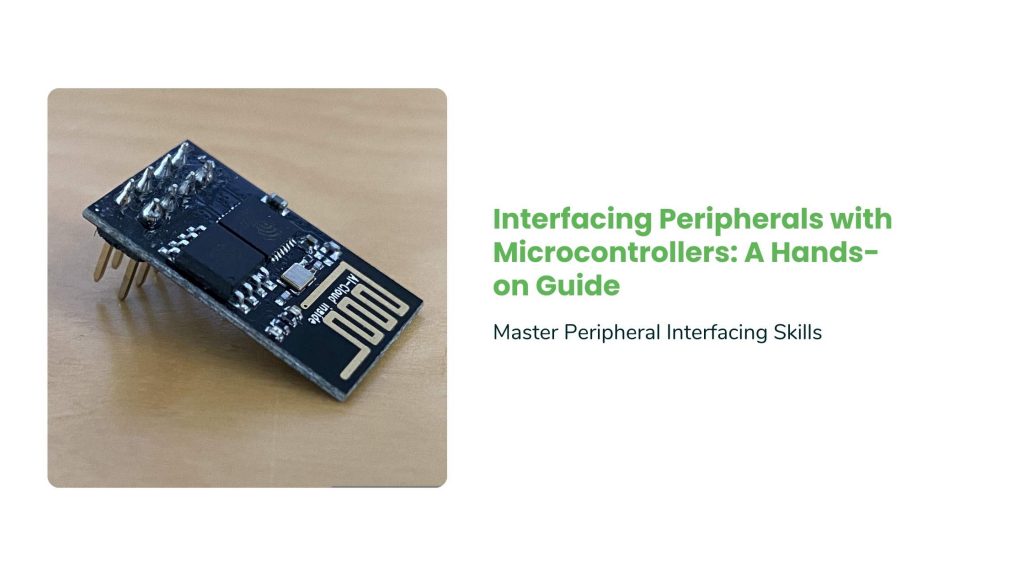
Introduction
Microcontrollers are at the heart of embedded systems, and their true power is unlocked by interfacing with various peripherals like sensors, displays, and communication modules. This blog provides hands-on examples to help you master peripheral interfacing for real-world applications.
1. Understanding Peripheral Communication
Microcontrollers use different protocols to communicate with peripherals:
- GPIO (General Purpose Input/Output): Simple digital control (e.g., LED blinking, button press detection).
- I2C (Inter-Integrated Circuit): Used for low-speed communication with multiple devices (e.g., EEPROM, OLED displays, sensors).
- SPI (Serial Peripheral Interface): Faster than I2C, often used for SD cards, TFT displays, and high-speed sensors.
- UART (Universal Asynchronous Receiver-Transmitter): Commonly used for serial communication (e.g., debugging via USB-to-Serial).
2. Hands-on Examples
Example 1: Controlling an LED with a Push Button (GPIO)
Objective: Turn on an LED when a button is pressed.
Connections:
- Button → GPIO pin (with pull-up resistor)
- LED → GPIO output pin
Code (Arduino C):
#define LED_PIN 13
#define BUTTON_PIN 2
void setup() {
pinMode(LED_PIN, OUTPUT);
pinMode(BUTTON_PIN, INPUT_PULLUP);
}
void loop() {
if (digitalRead(BUTTON_PIN) == LOW) {
digitalWrite(LED_PIN, HIGH);
} else {
digitalWrite(LED_PIN, LOW);
}
}
Example 2: Reading a Temperature Sensor (I2C – DHT11)
Objective: Read temperature data and display it on a serial monitor.
Connections:
- DHT11 Sensor → I2C pins (SDA, SCL)
Code (Arduino C with Wire Library):
#include <Wire.h>
#include <DHT.h>
#define DHTPIN 4
#define DHTTYPE DHT11
DHT dht(DHTPIN, DHTTYPE);
void setup() {
Serial.begin(115200);
dht.begin();
}
void loop() {
float temp = dht.readTemperature();
Serial.print(“Temperature: “);
Serial.print(temp);
Serial.println(” C”);
delay(2000);
}
Example 3: Displaying Data on an OLED Screen (I2C – SSD1306)
Objective: Display “Hello, World!” on an OLED screen.
Connections:
- OLED SDA → MCU SDA
- OLED SCL → MCU SCL
Code (Arduino C with Adafruit Library):
#include <Wire.h>
#include <Adafruit_GFX.h>
#include <Adafruit_SSD1306.h>
#define SCREEN_WIDTH 128
#define SCREEN_HEIGHT 64
Adafruit_SSD1306 display(SCREEN_WIDTH, SCREEN_HEIGHT, &Wire, -1);
void setup() {
display.begin(SSD1306_SWITCHCAPVCC, 0x3C);
display.clearDisplay();
display.setTextSize(1);
display.setCursor(0, 10);
display.print(“Hello, World!”);
display.display();
}
void loop() {}
Conclusion
Interfacing peripherals with microcontrollers unlocks countless possibilities in embedded systems. By mastering GPIO, I2C, SPI, and UART, you can build real-world applications efficiently.